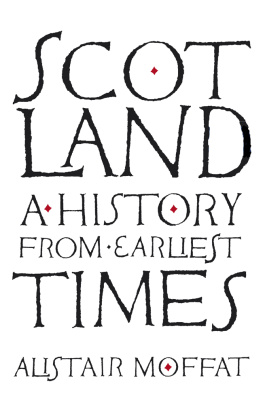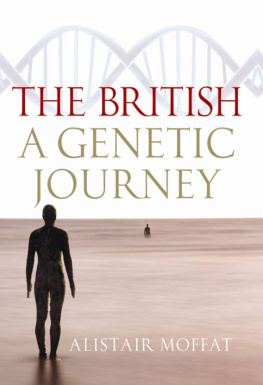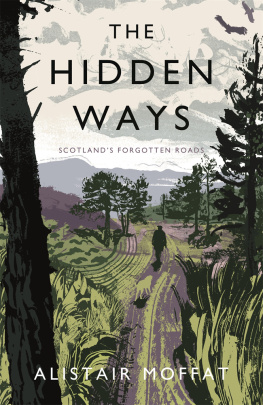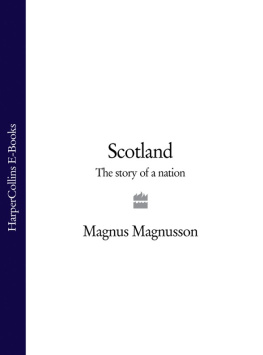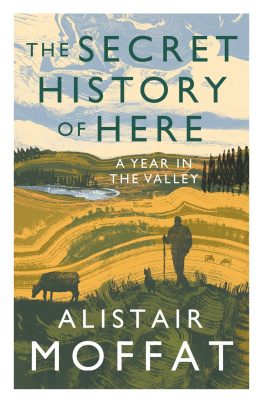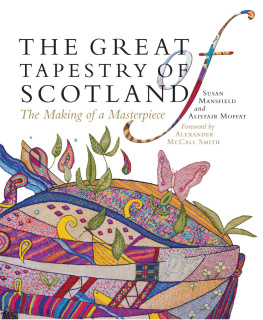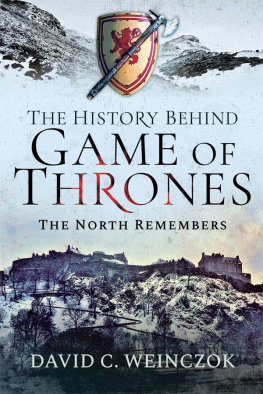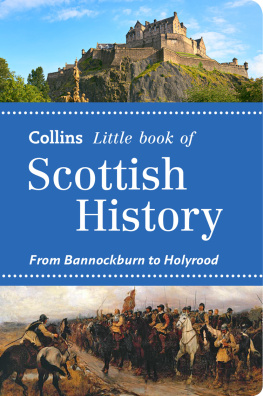Scotland
First published in 2015 by
Birlinn Limited
West Newington House
10 Newington Road
Edinburgh
EH9 IQS
www.birlinn.co.uk
Copyright Alistair Moffat 2015
The moral right of Alistair Moffat to be identified as the author of this work has been asserted by him in accordance
with the Copyright, Designs and Patents Act 1988.
All rights reserved.
No part of this publication may be reproduced, stored or transmitted in any form without the express written permission of the publisher.
ISBN 978 1 78027 280 1
eISBN 978 0 85790 874 2
British Library Cataloguing-in-Publication Data
A catalogue record for this book is available from the British Library
Typeset by Iolaire Typesetting, Newtonmore
Printed and bound by Bell & Bain Ltd, Glasgow
In memory of Hannah Moffat the story of Scotland
she will always be part of
Contents

List of Illustrations

| . | . |
| . | . |
| . | . |
| . | . |
| . | . |
| . | . |
| . | . |
| . | . |
| . | . |
| . | . |
| . | . |
| . | . |
| . | . |
| . | . |
| . | . |
| . | . |
| . | . |
| . | . |
| . | . |
| . | . |
| . |
| . | . |
| . | . |
| . | . |
| . | . |
| . | . |
| . | . |
| . | . |
| . | . |
| . | . |
| . | . |
| . | . |
| . | . |
| . | . |
| . | . |
| . | . |
| . | . |
| . | . |
| . | . |
| . | . |
| . | . |
| . | . |
| . | . |
| . | . |
| . | . |
| . | . |
| . | . |
| . | . |
| . | . |
| . | . |
| . | . |
| . | . |
Acknowledgements

T his was a big project and I needed the patience and help of the team at Birlinn more than ever. My thanks to Hugh Andrew, Jan Rutherford, Andrew Simmons and Anna Marshall, and to my editor, Patricia Marshall. Once again, Jim Hutcheson has designed a superb cover. My agent, David Godwin, also has great patience as well as tact. Thanks to all.
As I was writing the last chapters of this book, my granddaughter, Hannah Moffat, died and my son and his wife and our whole family were shattered by a grief beyond all our experience. The image of her little wicker-basket coffin will stay with me to the end of my days. This book is for the wee lass we were never allowed to know but will never forget.
Alistair Moffat
July, 2015
Selkirk
Introduction

S ITTING ON THE STEP outside my office on a sunny summer evening, when a peace seems to settle, I sometimes think I can see all of Scotlands history. Not through an effort of imagination but in the ways in which the five or six hundred generations before us left their marks on the land.
The shape of our little valley was scarted out by slow-motion primeval drama, by the rumble of the glaciers of the last Ice Age as they began to groan, crack and splinter, grinding out the river courses, shearing off cliff faces, rounding the distant hills of the Ettrick Forest and depositing the fertile soil where plants, trees and animals would come to thrive. On the flat valley floor, on the banks of the burns and on the slopes to the south stood the great Hartwood, the Deer Wood. After the ice shrank back and the land began to green, native trees carpeted Scotland with the Wildwood, a temperate jungle that reached up to the flanks of the highest hills and mountains. Willow scrub, birch, Scots pine, alder and ash were amongst the first to take root and they still grow well in the Hartwood, often on the regimented edges of Alaskan sitka. And the deer are still in the forest velvety, perfect, skittish little roe deer flit into the shadows and disappear in a moment. This year, a hind nested in the Crow Wood behind my office, where each evening the birds bicker and squabble over the best roosts. In the mornings grey dim and at dusk, she brought out two leggy fawns to graze the grassy fringes by the track.
The pioneers, the first to come north after the ice, saw much of what I see. Like the deer, their shadows flitted through the Wildwood, barely rustling the leaves of the six thousand autumns, winters, springs and summers when their descendants hunted and gathered a wild harvest across prehistoric Scotland. At the foot of the slope near my office there is a small standing stone. Twenty years ago when the old orchard by the burn was a tangle of nettles and willowherb, I fell or rather skidded over it. The stone was lying flat, recently tumbled, having kicked the earth out of its socket. With a shovel and a fencepost, I managed to lever it upright and now it stands approximately where it did. Perhaps it is not ancient, perhaps it is a boundary marker near the bank of the burn, but it is mysterious something raised for a forgotten reason by nameless people a long time ago.
Fertile, free-draining and sheltered, the little valley was home to generations of hunter-gatherers and then settled communities of early farmers. From the dark furrows of my neighbours newly ploughed fields, I have picked up a few beautifully knapped flints and what looks like part of an axe-head. And, further down the valley, a spring plough skinned the stone lid off a cist and, for the first time in four thousand years, the sun warmed the dust and bones inside. To the east of where I sit rises the Deer Park and, in the green folds of the hill, there are scooped-out depressions that offer welcome shelter from the west wind. When a sugar-dusting of snow falls, they are easy to see. Perhaps they were shielings where herd-laddies kept watch on beasts summering out on the higher pasture.
No conjecture swirls around the identity of those who arrived in the valley at the end of the 1st century AD. The thud of hooves, the jingle of bridles and the rhythmic tramp of marching soldiers announced that the Empire had come north. About three miles to the west of where I sit in the evening are the grassed-over banks and ditches of Oakwood Fort, built by a cohort of 500 men, a mixture of cavalry and infantry under the overall command of the great general, Agricola. Watched by the hostile native kindred the Selgovae squads of imperial soldiers dug ditches, built ramparts and laid out roads and a signal station. Through a depression in the ridge of the Deer Park, the men at Oakwood could look east and see the signal station built on the summit of Eildon Hill North, above the sprawling supply depot at Trimontium. For only one generation, 20 years, the Romans marched up and down our little valley, filing intelligence reports, skirmishing with the war bands of the Selgovae, laying down the controlling framework of a new province for the Empire. But then in AD 100, the Emperor Trajan withdrew troops from Britain for his invasion of Dacia, modern Romania, and the frontier was pulled back to the line of the Tyne and Solway. And perhaps in triumph, the Selgovae war bands burned the wooden gate towers at Oakwood.

